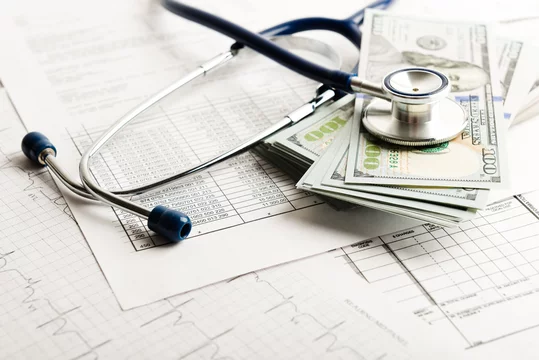Cognitive enhancement has become a rising focus, as people from all walks of life seek to optimize mental performance, memory, and concentration. Wearable brain devices are now at the forefront of this movement, promising to boost brain function using advanced technology. From improving focus during work to aiding in medical rehabilitation, these brain wearables claim to deliver tangible mental benefits. But how reliable are they? Can they make you smarter? This guide explores wearable technology for mental health, biohacking tools, and their potential benefits and precautions.
What Are Wearable Brain Devices?
Wearable brain devices are innovative technologies designed to monitor, stimulate, or enhance brain activity. These biohacking devices use non-invasive techniques to interact with brain functions, such as neurofeedback, electrical stimulation, and biometric tracking. They monitor brain health, assist in rehabilitation, or interface with external technologies for augmented or virtual reality experiences.
The goal is to improve cognitive abilities, reduce stress, and address medical issues related to brain health. Also, these technologies integrate neuroscience with wearability, making biohacking brain health more accessible. They are engineered to be portable, allowing users to engage with brain-computer interfaces in real-world settings outside clinical or laboratory environments.
As research advances, wearable brain devices are becoming more sophisticated, offering promising applications for both daily productivity and medical needs. The history of these devices shows a progression from simple sensors to complex, integrated systems, offering various types for different uses.
Can Wearables Really Improve Brain Function?
Wearable brain devices hold significant potential for enhancing brain function, with a focus on cognitive improvement through techniques like transcranial direct current stimulation (tDCS), neurofeedback for meditation, and various therapeutic applications. These devices aim to boost cognitive abilities such as memory, attention, and learning and can also indirectly enhance cognitive function by aiding in meditation, reducing stress, and improving sleep quality.
However, their effectiveness faces several challenges, including the need for more scientific validation since many are still in research stages and lack comprehensive clinical trials, leading to skepticism about their real-world benefits.
Moreover, there are regulatory concerns as many devices are marketed under the wellness category, thus not requiring FDA approval, which questions the accuracy of their health benefit claims. The collection of neural data by these devices also brings up significant privacy and security issues, potentially exposing intimate aspects of one’s mental state. The impact of these devices on individual health and broader healthcare systems is a topic of ongoing research, with AI playing a role in enhancing personalization and predictive capabilities.
Top Innovative Wearable Technologies For Cognitive Enhancement
Advancements in neuroscience and technology have led to the development of wearable devices designed to optimize brain function. These tools rely on real-time data, neurostimulation, and biometric tracking to enhance focus, memory, and mental clarity. The following are some of the best examples of biohacking tools:
Wearable EEG Headsets
Wearable EEG headsets monitor brainwave activity using electroencephalography. These devices detect electrical signals in the brain and provide real-time feedback to users. It works to give info about emotions, thoughts, and mental health. Headsets like the Muse Headband promote mindfulness, improve focus & clarity, help users to be more calm & relaxed, have better emotional regulation & sleep quality, and reduce stress through guided neurofeedback exercises [1]. Regular use can help individuals regulate brain activity, enhancing concentration and mental clarity.
Wearable tDCS Devices
Transcranial direct current stimulation (tDCS) devices deliver low-level electric currents to specific brain regions to stimulate neural activity. Products such as Halo Sport are widely used to improve learning, memory, and motor skill acquisition. tDCS enhances cognitive performance, particularly in areas like problem-solving and focus, when used consistently. Athletes, students, and professionals often use these biohacking devices for performance optimization.
CES Devices
Cranial electrotherapy stimulation (CES) devices target symptoms of stress, anxiety, and sleep disorders. By applying gentle electrical stimulation to the scalp, these devices promote relaxation and mental balance. CES is effective in reducing symptoms of depression and improving sleep quality, making it a non-invasive alternative for mental health management. The FDA recognizes it as a remedy for anxiety, depression, & insomnia, among other conditions [2].
Smart Rings
Smart rings are compact wearables that monitor biometric data, including heart rate, sleep patterns, and activity levels. Devices like the Oura Ring provide insights into physical and mental well-being, helping users optimize recovery and focus. By tracking key metrics, smart rings allow individuals to adjust their routines for better cognitive performance.
Heart Rate Variability (HRV) Monitors
HRV monitors measure the variation in time between heartbeats, providing insights into stress levels and overall health. These wearables, like the Whoop, analyze HRV to help optimize athletic performance & recovery [3]. By tracking HRV, individuals can identify stress patterns and make lifestyle adjustments to improve resilience.
Sleep Wearables
Sleep wearables track sleep quality and duration, providing data on deep sleep cycles crucial for brain recovery. Devices like Fitbit and Dreem analyze sleep patterns to identify disruptions and recommend strategies for better sleep. Improved sleep quality enhances memory consolidation, cognitive performance, and overall brain health.
Light Therapy Wearables
Light therapy devices employ targeted wavelengths of light to regulate circadian rhythms, enhance energy levels, and sharpen focus. By emitting blue and green light, these wearables, such as glasses, work to improve sleep quality, reduce fatigue, and increase mental clarity. They are particularly effective for managing conditions like seasonal affective disorder (SAD) and boosting daytime alertness, offering a practical solution for those seeking to optimize their sleep-wake cycles and cognitive performance.
Medical Applications of Wearable Technology
Wearable brain devices are revolutionizing medical care with their innovative applications in managing neurological and mental health conditions. Some of the applications of wearable technology in healthcare include:
- stroke care: Wearable EEG (electroencephalogram) headsets are instrumental in stroke rehabilitation by monitoring brain activity in real time. These devices facilitate recovery by guiding patients through targeted neurofeedback exercises, offering a non-invasive method to support motor function recovery and enhance post-stroke outcomes;
- wearable stress and depression monitor: Devices like Cranial Electrotherapy Stimulation (CES) units are employed to manage mood disorders. They work by stimulating neurotransmitter activity, which can reduce symptoms of anxiety, stress, or mild depression. CES can improve mental well-being without the need for medication;
- wearable technology for epilepsy: Wearables in this domain, such as seizure detection devices, monitor brain signals to predict and alert about potential seizures. By tracking physiological changes, devices like these provide critical early warnings, thus increasing safety and offering reassurance to epilepsy patients and their caregivers; recovery from concussion or traumatic brain injury (TBI): Wearable EEG headsets and neurostimulation devices are pivotal in tracking brain function post-injury. They help healthcare providers tailor rehabilitation plans based on real-time data, which can lead to faster recovery and better therapeutic results for those recovering from concussions or TBIs;
- ADHD management: Wearables including tDCS devices and neurofeedback systems are showing promise in helping manage ADHD symptoms. They assist in enhancing focus and cognitive control, providing a non-pharmacological approach for children and adults, which is particularly appealing for those looking for alternative or supplementary treatments.
Also, in epilepsy management, wearable brain devices monitor brain signals to detect seizures. Companies like Empatica offer wearables that provide early warnings, improving safety for patients with epilepsy. It measures numerous signals & uses advanced onboard machine learning/AI to detect a potential convulsive seizure & issue attention to caregivers [4].
Benefits of Wearable Tech for Brain Health
Wearable technology for brain health provides numerous advantages, primarily through continuous monitoring and cognitive enhancement. These devices track brain activity, sleep, and vital signs in real time, offering insights that were once only possible in clinical environments. This allows for early detection of brain health changes, which is crucial for managing conditions like epilepsy or detecting neurodegenerative diseases early on. Additionally, technologies like tDCS and neurofeedback aim to improve cognitive functions, offering non-invasive methods to boost mental performance.
Beyond cognitive enhancement, wearables play a significant role in mental and therapeutic health management. They help monitor stress, mood, and sleep patterns, aiding in the management of conditions like anxiety, depression, and insomnia. Therapeutic applications extend to aiding recovery from neurological issues like ADHD, stroke, or concussions by providing personalized feedback or stimulation.
Furthermore, these devices empower users with control over their health data, facilitate personalized medicine, and contribute to research, thus potentially improving treatments and quality of life while also enhancing safety via emergency alerts for conditions like seizures. However, there are also disadvantages, including privacy concerns, the need for more research on long-term effects, and the variability in effectiveness among individuals.
Considering all the pros and cons may impact your decision; however, rather than relying on wearable devices to improve brain function, modafinil & armodafinil can ultimately increase cognitive function. These meds are well-tolerated and safe when taken as prescribed, offering a range of cognitive benefits. They sharpen focus, boost memory, enhance critical thinking, improve concentration, increase attention span, elevate planning and decision-making skills, increase fluid intelligence, enhance mental acuity and energy, and provide sustained energy throughout the day, among numerous other benefits to brainpower .
Generic versions of these “smart drugs,” such as Artvigil, can be bought online from a reliable vendor like https://modafinil.au/smart-drugs/artvigil-150-mg/ without a prescription, with the convenience of swift doorstep delivery and the assurance of refund or reshipment if the parcel is lost or held at customs.
Precautions for Use of Wearable Brain Devices
When engaging with wearable brain devices, prioritize safety and efficacy. Consultation with a physician is recommended before use, especially for people with pre-existing medical conditions, to ensure the device is suitable and to monitor for any adverse effects. Understanding the device thoroughly—including its operation, intended benefits, and potential risks—is essential.
Users should look for devices backed by peer-reviewed research to avoid those with unsubstantiated health claims. Privacy is another major concern; ensure the manufacturer has strong data protection policies since brain activity data is sensitive. Be aware of and adhere to manufacturer guidelines on usage to prevent misuse, which could lead to ineffective results or health issues.
Additionally, users must be vigilant about side effects like headaches or mood changes, particularly with stimulation devices, which might have contraindications for certain groups. Maintain realistic expectations about the device’s capabilities, recognizing that benefits can vary greatly among individuals.
Keep abreast of legal and regulatory frameworks in your area, as they can impact device safety and usage. Regular maintenance, including cleaning, is necessary to avoid hygiene-related issues. Finally, be mindful of potential interference with other medical equipment or environmental factors.
In Closing
Wearable brain devices have revolutionized cognitive enhancement and brain health management, offering tools to boost focus, reduce stress, and support neurological recovery. From EEG headsets to tDCS and CES devices, these innovations bridge neuroscience and technology, providing practical solutions for both personal and medical use. While wearables are not instant solutions, their effectiveness grows when paired with healthy habits and proper guidance.
As research progresses, wearable technology is set to redefine how we approach brain optimization, unlocking new possibilities for mental well-being and performance. The future of medical wearable technology looks promising, with ongoing developments in the latest trends in medical monitoring devices and wearable health technology enhancing the impact on health management.
References
- Train your brain & find your focus. Retrieved: December 18, 2024. Choosemuse.com.
- Efficacy of electrical cranial stimulation for treatment of psychiatric symptoms in patients with anxiety: A systematic review and meta-analysis. By Feng-Chin Chung, Cheuk-Kwan Sun, et al. Published: April 6, 2023. Pmc.ncbi.nlm.nih.gov.
- Optimizing athletic performance and recovery using machine learning at WHOOP. By eagerbeaver20. Retrieved: December 18, 2024. D3.harvard.edu.
- Empatica Embrace. Retrieved: December 18, 2024. Epilepsy.com.










